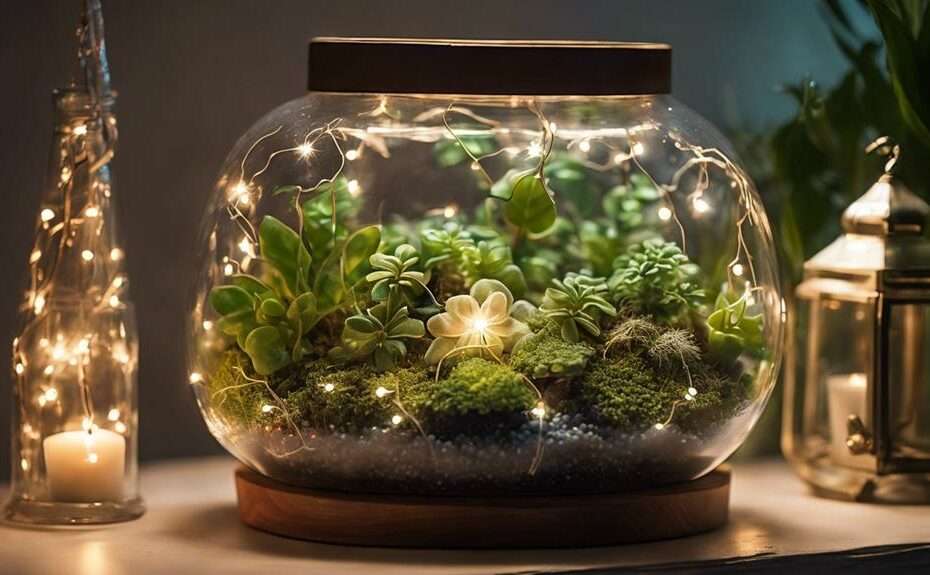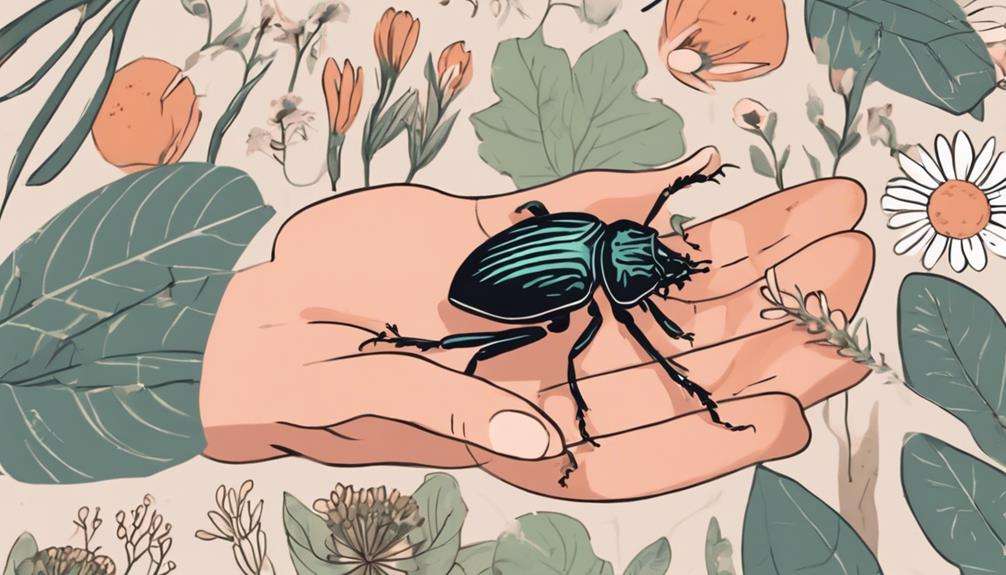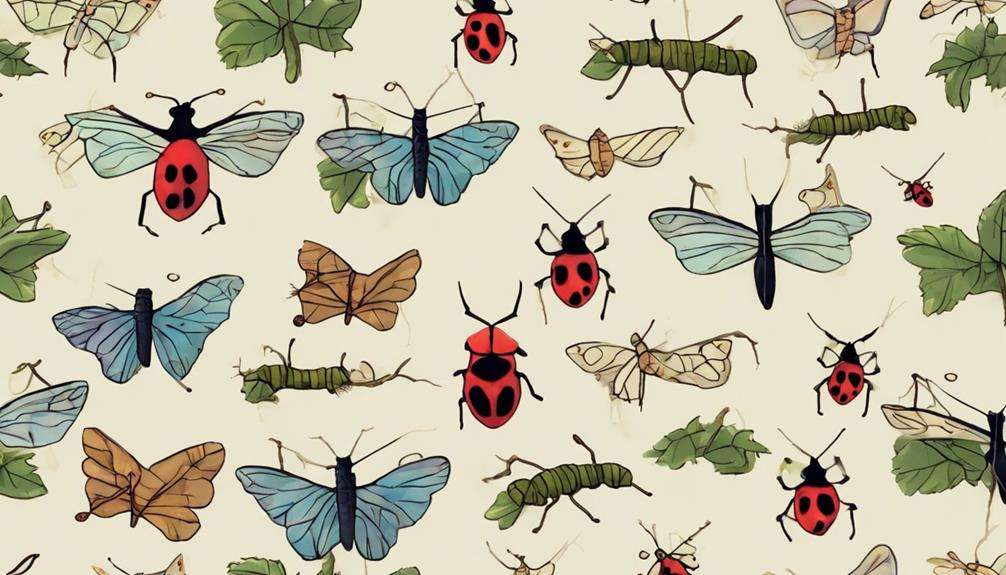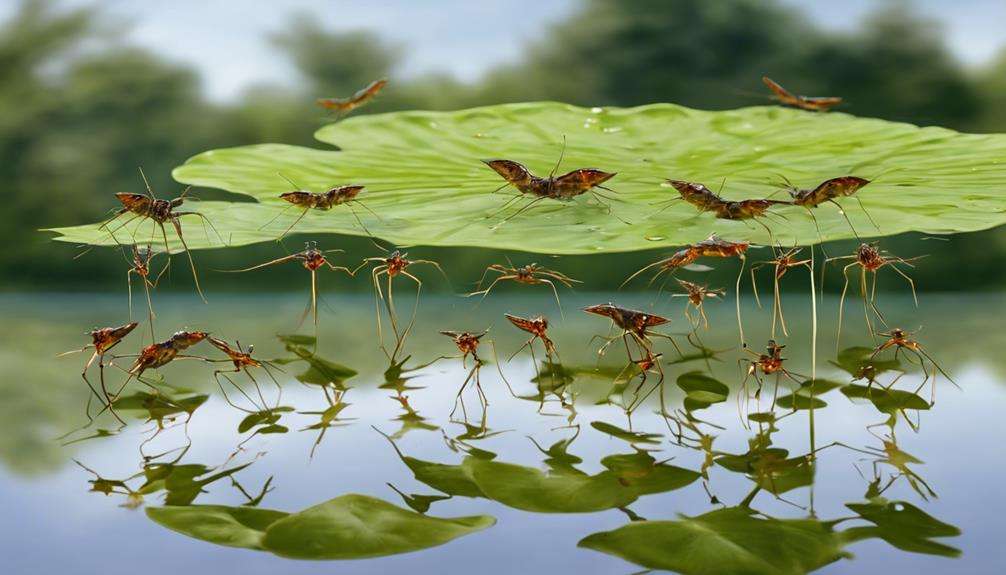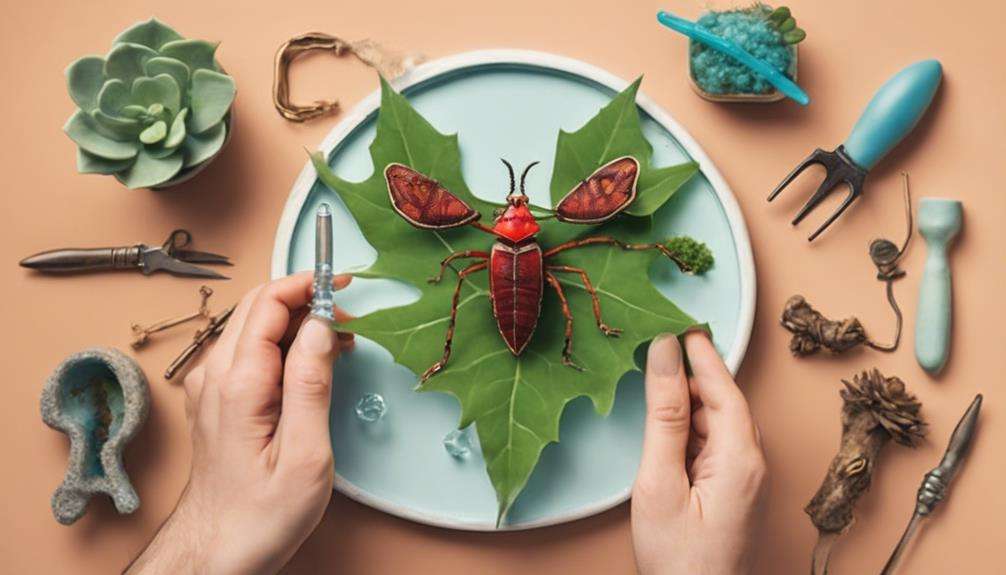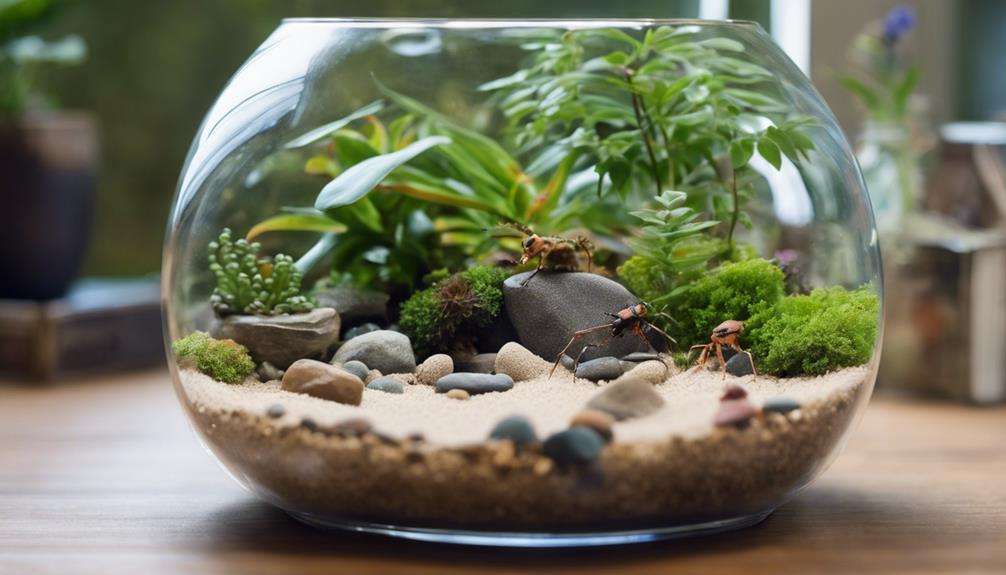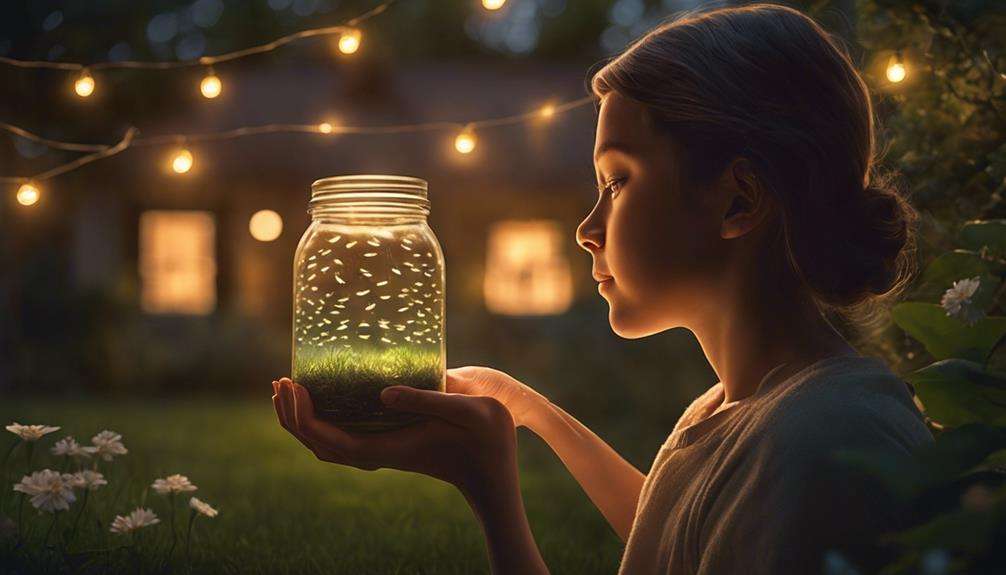Imagine this – did you know that glowworms are not actually worms but larvae of specific species of beetles? Fascinating, isn't it?
Perhaps you've caught yourself wondering about the possibility of bringing these enchanting creatures into your home as pets. As you ponder the intricacies of caring for glowworms in captivity, there are essential factors to contemplate to ensure their well-being and your enjoyment of their mesmerizing glow.
Stay tuned to discover the secrets behind successfully keeping glowworms as pets, and reveal the magic of these bioluminescent beauties.
Key Takeaways
- Glowworms are low maintenance pets requiring minimal feeding for adults.
- Create a suitable habitat with proper substrate and dim red/blue LED lighting.
- Maintain humidity levels and offer a varied diet for optimal glowworm care.
- Encourage reproduction through appropriate care, varied diet, and controlled lighting cycles.
Glowworms as Unique Pets
Glowworms, as unique pets, exhibit an enchanting bioluminescent light production that mesmerizes observers. These fascinating creatures are a marvel to behold in captivity, providing a serene and ambient ambiance with their gentle glowing light. Glowworms are considered low maintenance pets due to their simple care requirements. Once established in a suitable habitat that mimics their natural environment with moisture, darkness, and appropriate prey, glowworms thrive without the need for regular feeding as adults.
The bioluminescent light emitted by glowworms adds a touch of magic to any living space. Their soft glow not only serves as a beautiful spectacle but also creates a calming atmosphere, perfect for unwinding after a long day. Observing these captivating insects can be a source of wonder and inspiration, sparking conversations among visitors and fostering a deeper appreciation for the natural world. Glowworms truly offer a unique and mesmerizing experience as pets.
Setting Up a Glowworm Habitat
To create a top-notch habitat for glowworms, carefully select a glass container with a secure lid that allows for proper airflow.
Make sure to provide a suitable substrate of moist soil, leaf litter, and moss to mimic their natural environment.
Also, setting up dim red or blue LED lighting to observe them without causing disturbance during their active nighttime hours is crucial.
Choosing Suitable Containers
Select a glass or plastic container with a secure lid to maintain proper humidity levels and prevent escape when setting up a habitat for adult glowworms. Make sure the container has ventilation holes to allow for airflow, balancing moisture within the environment.
Use a substrate such as damp soil or moss, creating a conducive space for the small glowworms to burrow and seek shelter. Incorporate natural elements like small rocks, twigs, or leaves to replicate their natural habitat.
Place the container in a dark, quiet area away from direct sunlight to mimic the ideal conditions for glowworms' light production. This setup will provide a suitable environment for the glowworms to thrive in captivity.
Providing Proper Lighting
For perfect habitat conditions, make sure that the lighting provided for glowworms is consistently dim to mimic their natural environment accurately. Glowworms thrive in low light levels, preferring ambient lighting that allows them to showcase their bioluminescence effectively.
It's important to avoid UV light sources in their habitat as they can disrupt the glowworms' behavior. Providing a consistent light cycle is essential for the well-being of captive glowworms, helping to regulate their natural rhythms.
Remember that light pollution can have detrimental effects on the health and behavior of glowworms in captivity, so it's important to maintain a controlled lighting environment. By adhering to these guidelines, you can create a suitable habitat that promotes the well-being of your glowworm pets.
Maintaining Humidity Levels
Maintaining the appropriate humidity levels in a glowworm habitat is important for replicating their natural environment accurately. Captive glowworms require a humidity level ranging from 70-90% to thrive. To achieve this, consider using sphagnum moss and damp substrate in the habitat. These materials aid in retaining moisture, creating a suitable microclimate for the glowworms.
Regular misting with a spray bottle or implementing a misting system can help regulate humidity levels effectively. Monitoring the humidity levels is essential; using a hygrometer will make sure that the conditions remain best for the glowworms in captivity. By paying close attention to humidity levels and providing the necessary moisture-retaining elements, you can create a habitat that promotes the health and well-being of your glowworm pets.
Glowworm Diet and Nutrition
Glowworms require a diverse diet to thrive.
Larvae feed on snails, slugs, and insects.
Their specialized mandibles aid in efficient digestion of these primary food sources.
Adult glowworms display varied feeding habits.
They consume pollen and exhibit predatory behaviors.
Glowworm Feeding Schedule
What key factors influence the glowworm feeding schedule in captivity?
Glowworms, especially larvae, require a diet rich in fresh snails to meet their nutritional needs and maintain proper development. Their predatory nature dictates that their primary diet consists of snails, slugs, and insects.
While adult glowworms may have varied diets, including pollen and other prey, some species don't consume any food at all. Larvae possess specialized grooved mandibles that aid in the digestion of snails and other prey.
To maintain the health and growth of glowworms in captivity, it's essential to establish a consistent and balanced feeding schedule that meets their dietary requirements.
Essential Nutrients for Glowworms
In captivity, the glowworm's diet plays an important role in providing essential nutrients for their well-being and development. Glowworm larvae require a high-protein diet to support their growth. Calcium-rich foods like crushed eggshells or cuttlebone are essential to maintain their exoskeleton.
It's vital to offer a varied diet to guarantee glowworms receive all the essential nutrients necessary for their health. In their natural habitat, glowworms primarily feed on snails, slugs, and insects, which can be supplemented with small pieces of fruits such as apple or pear. By incorporating these elements into their diet, you can help support the optimum health and development of your glowworm pets.
Feeding Tips and Tricks
Calcium-rich foods like crushed eggshells or cuttlebone are essential components of a balanced glowworm diet, supporting their exoskeleton health and overall well-being.
Glowworm larvae primarily feed on snails, slugs, and insects to meet their nutritional needs. Some larvae possess specialized grooved mandibles to aid in prey digestion.
Adult glowworms showcase varied diets, from consuming pollen to displaying predatory behavior. Certain adult species abstain from eating, relying solely on energy reserves accumulated during their larval stage.
Glowworms exhibit omnivorous feeding habits, adapting their diet depending on their life stage. Understanding the dietary requirements of glowworms is important for maintaining their health and ensuring they thrive in captivity.
Understanding Glowworm Behavior
Glowworm behavior is characterized by their intricate use of bioluminescence to attract prey and mates, as well as their construction of silk nests for hunting purposes. These fascinating insects possess specialized organs and undergo chemical reactions that result in the production of light, a process known as bioluminescence. The glow emitted by glowworms not only aids in luring prey but also plays an important role in attracting potential mates for reproduction.
The creation of silk nests by glowworms showcases their advanced hunting techniques. These nests serve as a strategic location for capturing unsuspecting prey that gets ensnared in the sticky silk threads. Understanding these behaviors is important for effectively caring for glowworms in captivity. By observing their natural behaviors, enthusiasts can gain valuable insights into the environmental conditions necessary to replicate their native habitat accurately. Providing appropriate conditions that mimic their natural habitat is essential for the well-being and longevity of glowworms in captivity.
Glowworm Care Tips and Tricks
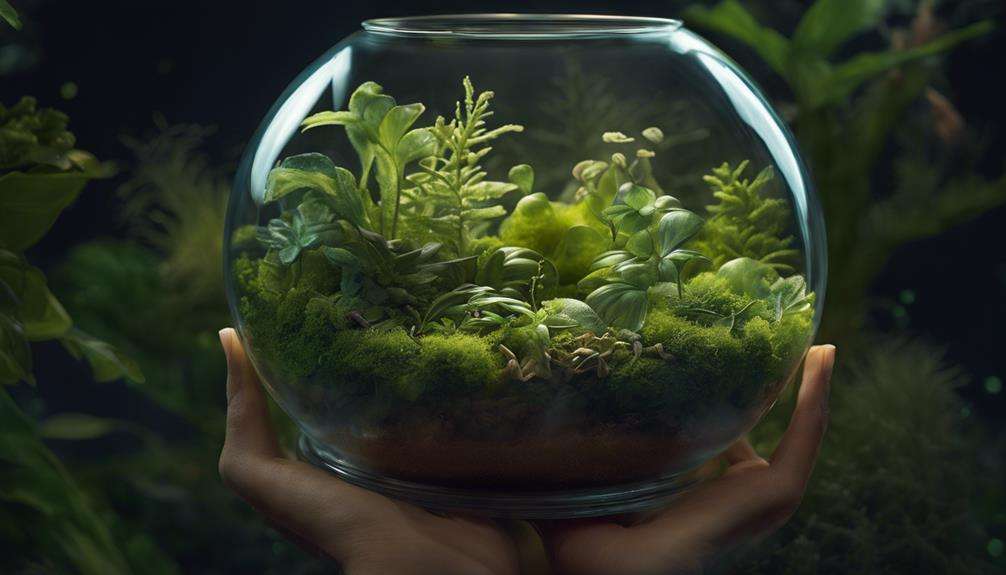
Observing glowworm behavior in their natural habitat can offer valuable insights for implementing effective care tips and tricks when keeping them as pets. To guarantee the well-being of your glowworms, maintaining an appropriate humidity level is vital. Provide a humid environment with proper ventilation to support their respiratory functions. Additionally, offer a substrate of moist soil or moss for burrowing and nesting, promoting a sense of security for these delicate insects.
When it comes to diet, feed your glowworms a variety of foods such as snails, slugs, insects, or commercially available invertebrate food to meet their nutritional requirements. Ensuring a consistent temperature range between 60-75°F (15-24°C) is crucial to support their metabolic processes and overall activity levels.
To mimic their natural habitat, establish light cycles by providing a dark period at night. This encourages glowworm bioluminescence, allowing you to witness their enchanting glow. By paying attention to these care tips and tricks, you can create a thriving environment for your glowworm pets.
Reproduction and Lifecycle of Glowworms
During the reproductive phase, glowworm larvae undergo a change leading to the development of their distinctive light-producing organs. As the larval stage progresses, female glowworms evolve into pupae, displaying luminescence in some species.
Males, attracted by pheromones or light emissions, seek out these glowing females for mating. The intricacies of light production vary among glowworm species, with differences in light organ structures and chemical reactions.
Once mating occurs, the male adults have a short lifespan, typically only living for a few days. Adult glowworms have degenerate mouth parts and don't feed, as their primary focus shifts towards reproduction and ensuring the survival of the species.
Understanding the lifecycle and reproductive behaviors of glowworms is important for those interested in keeping these fascinating insects as pets, as it provides insights into their unique biology and care requirements.
Frequently Asked Questions
Can You Breed Glow-Worms?
Yes, you can breed glow-worms by replicating their natural habitat and providing suitable food sources. Glow worm breeding involves mimicking their lifecycle, mating habits, and ensuring ideal conditions for offspring development. Captive breeding programs have been successful in maintaining populations.
How Do You Keep Glow-Worms?
To care for glow-worms, make sure a terrarium with moist soil, hiding spots, and small insects for their diet. Maintain consistent 65-75°F temperature, low light levels, and humidity. Creating a natural habitat will support glow-worms' well-being and behavior.
Can You Buy Glow-Worms?
You can't buy glow-worms easily due to legal protections and habitat needs. Glow-worms require specific care, prefer damp environments, live up to a year, and emit bioluminescent light to attract prey or mates, fascinating creatures to observe.
What Does Glow-Worms Eat?
You know what glow-worms eat? They chow down on snails, slugs, insects, and even a bit of pollen. Their omnivorous nature allows them to adapt to various food sources, supporting their nutritional needs and dietary preferences.
Conclusion
As you gaze upon the ethereal glow of your captive fireflies, you witness a miniature symphony of bioluminescent beauty. Like stars in a jar, these quaint insects illuminate the darkness with their enchanting light.
By nurturing these delicate creatures in your carefully crafted habitat, you hold the key to unearthing the mysteries of nature's dazzling display. Embrace the wonder of fireflies as pets, and let their luminous presence guide you through the depths of the night.
